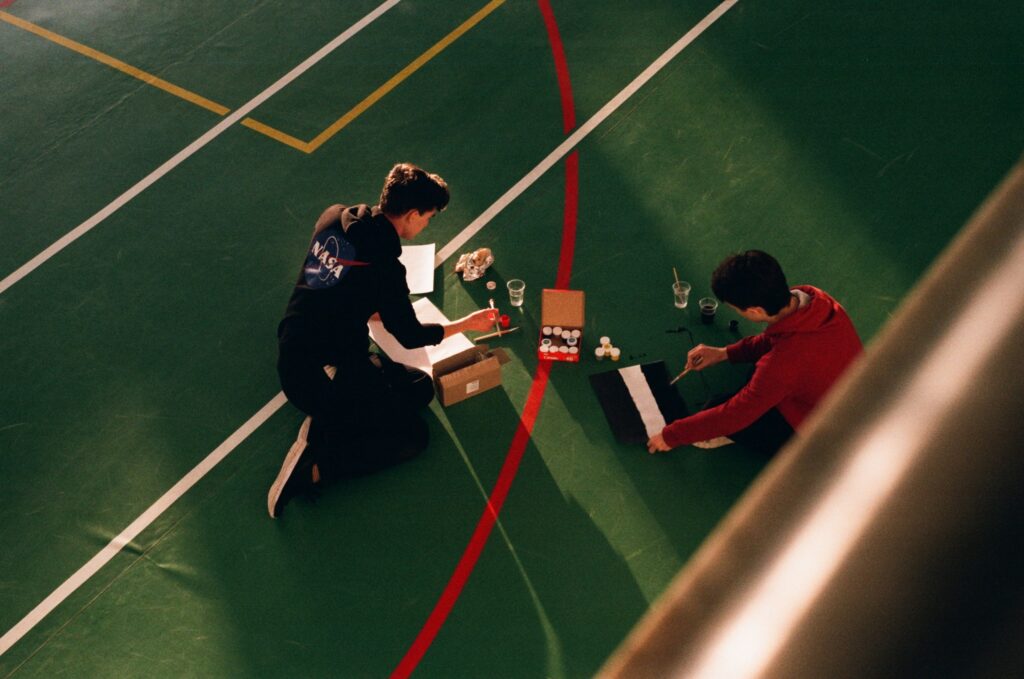11 Habits to Free Yourself From Childhood Trauma

Childhood trauma can be daunting to look at, at times. For some, it is something that they are more than happy to try to ignore. Unfortunately, childhood trauma affects your adult life in many ways. And, if it is not looked at and healed, it will continue to affect you negatively extending its reach to all areas of your life.
Deep down, everyone wants to live a happy and healthy life which is why we at Psych2Go have compiled a list of some things that you can start doing or consider doing to heal. Yes, healing is painful but in the end, is worth it letting all of it go.
This article is for information and educational purposes only. It is not meant to replace professional medical help, treatment, or advice. If you require help please contact a mental health professional or the authorities. This article is in no way comprehensive, do not hesitate to search for other ways or practices to help you in your healing journey.
Here are 11 things you can do to free yourself from childhood trauma.
1- Recognize the trauma
As with anything that you might want to heal or change in your life, the first thing that you have to do to free yourself from childhood trauma is to recognize the trauma. But not only recognize the event, but you also need to become aware that what happened was indeed trauma.
When raised in an abusive, toxic, and traumatic environment it is easy for the child to be taught that what is happening is normal. Hence, they learn to dismiss it, along with their feelings, and end up thinking that the problem is them since everything else is just a “normal” part of life.
This makes it hard to identify what you went through as trauma, and as something harmful to you. There are also times when the event is so traumatic that the mind purposely forgets because it wants to protect you. Unfortunately, it’s not a foolproof mechanism as the memories may come back when you least expect them or when you encounter an unknown trigger.
Such trauma is best to work through with a mental health professional that specializes in trauma.
Now, if you want to start working on your trauma before you refer to a mental health professional what you can do is start with a smaller trauma. Big traumas can be overwhelming but starting the healing work with smaller traumas can help us slowly unravel the bigger ones, as most times, small traumas compound or culminate in the big ones.
2- Notice and track feelings

Do you know why you feel the way you do? Trauma tends to make us feel things that seem completely unrelated to the situation we are currently in or our overall physical health. Trauma lives both in the body and the mind, which means that sometimes we feel an ache in our bodies that can’t be explained or we react negatively to something seemingly normal and we can’t pinpoint why we did that.
Noticing and tracking these feelings will eventually help you understand yourself better, become aware of yourself, and maybe even find the source of those negative feelings, aches, and reactions.
Kati Morton, a licensed therapist, and well-known YouTube therapist explains in one of her videos the importance of looking at your feelings.
“The truth is, if we’ve been raised in an emotionally neglectful environment our feelings have been ignored for so long that it’s normal to not know how you feel,” explained Morton, “So give yourself a chance to figure it out and get to know who you truly are”.
3- Do inner child work with your childhood trauma
The inner child is one of the methods used to help people heal from their childhood traumas. It is used both by individuals and professional mental health workers such as BetterUp. But, what does it entail?
According to a BetterUp article, inner child work is an approach to recognizing and healing childhood trauma.
“It recognizes that our behaviors as an adult stem from our childhood experiences”, explained BetterUp, “Inner child work focuses on addressing our unmet needs by reparenting ourselves. This kind of self-discovery helps us understand our behaviors, triggers, wants, and needs”.
With inner child work you are essentially giving your past child self what they need via your present adult self.
“When you begin working to heal your inner child, you sort of go back in time — emotionally and mentally — to that traumatic event”, BetterUp said in the article, “You can understand how your inner child feels from the perspective of an adult. With that, your adult self can start to untangle the coping mechanisms your teen or child self came up with to protect you from further trauma.”
By doing this you can make way for healthier coping mechanisms as well as healing and inner resolution.
Other benefits of doing inner child work, BetterUp states, are the development of self-awareness, the understanding of how past trauma affects or dictates your behavior now, reconnecting to old passions, dreams, and talents you may have pushed aside, finding empowerment and control in your life, emotional regulation, increased self-esteem, self-compassion, and compassion for others.
You are also able to notice your needs better, learn how to practice self-care, and find out what makes you feel nurtured.
4- Go to Therapy that does work

Have you ever been to therapy where there doesn’t seem to be much progress despite all the talking that does on during the session? Sometimes just talking doesn’t help. This is why Patrick Teahan, a licensed independent clinical social worker, recommends finding a therapist who gives you or does exercises with you.
“I can’t tell you how many clients I’ve had that discuss prior therapists who seem to be waiting for the client to shift, or have big epiphanies, or insights, etc”, Teahan said in his video, “And there’s not a lot of action going on of the work that those people are doing. If you are seeking to do work on your toxic family system and trauma, therapists who are like that are probably not going to get you there”.
Teahan recommended looking for a therapist that specializes in one or two things instead of many, preferably something that you are interested in working through.
5- Get out of your head and move
As mentioned above, movement has become a big part of therapy since new research has shown that trauma lives in the body. One of the ways to move through and heal trauma is movement.
By moving, whether it is exercise, dancing, stretching, or just shaking your body out you can first get out of your head and second move all of that energy out of you. Some remnants of traumatic experiences are mental and emotional blockages that keep you in your head and unable to take positive action in your life.
Moving helps you get out of those thoughts so that you can look at and access them more neutrally later. Movement also helps ease those parts of your body that seem to hurt or ache due to that past trauma.
If you are not sure about getting into a movement routine yourself, you can always look for a somatic practitioner or a movement therapist who is qualified to work with people to heal from their traumas through some kind of movement such as dancing.
6- Build consistency

One of the practices that help with trauma is to build consistency when it comes to good and healthy habits. Building consistency, and practicing constantly will also help you build confidence in yourself again because confidence is acquired through doing.
Consistently working on good habits whether it is a gratitude list, workout program, going to your therapy appointments, etc, will also help you change your point of view and give you clarity in your life. It will also help change your views from negative to positive to being empowered and having control of your life.
7- Understand family origins & dynamics
As you go through therapy and become more aware, learn everything you can about how your family worked during the time of the trauma and how your family works now. Also, look into the whys but never forget that understanding doesn’t mean admitting that the behavior wasn’t bad.
This will help you understand how come things became the way they were, and are now. It will help you see why you act in certain ways depending on the situation. It will also make you aware of patterns, cycles, or generational traumas that you inherited and might be able to work through and break them so that future generations or just people in your life will not be impacted by them.
8- Get out first

For those who are still living with their parents or with an abusive family, Patrick Teahan, a licensed independent clinical social worker, recommends starting planning your escape financially.
“Get out”, he said, “Healing comes later, first cut off toxic family ties”.
Living within a toxic environment will not allow you to heal or even begin to realize that you have been wronged in any way. The family may also prevent you from getting the help you need by gaslighting, threatening you, or even lying to other people including authorities.
Before starting your healing journey, you need to get out of that situation and for that, you will need to manage your finances, find a place to live, and find work, among other things. So, while you’re still there be sure to get everything together so that when you get the opportunity, you can leave and never look back.
9- Be kind and Patient
Have you ever felt frustrated that things aren’t going as fast as you want them to? Breathe. Unfortunately, healing trauma can take time. Be kind and patient to yourself, be what your toxic family never was to you, loving.
This will help you heal and tend to your inner child, giving them what they need, and helping you trust yourself slowly despite the trauma you have gone through. It is a long process, but in the end, it is worth it.
10- Set healthy boundaries

Once you’ve healed enough, start setting healthy boundaries with yourself and others. Don’t let others walk all over you. Recognize the signs of abuse and manipulation, and don’t let it in again.
Boundaries are necessary and it is ok for you to have them despite what others might say. If someone has a problem with said boundaries, it might mean that they are angry that they can’t control you anymore.
11- Accept help, Reach out, & Find community
One of the most important things to have when it comes to healing is a community. People who you can lean on, and count on while your going through this process will tremendously take a load off and help you feel like you are not alone.
Accept help from a friend, and reach out to people you know you can trust, even if you feel like you’ll burden them. Most people will love to help. If you’re unsure, you can always find support groups like AA (Alcoholics Anonymous) or find 12 Step Programs that can help to support you throughout your healing journey.
Do you find these helpful? Let us know in the comments. Don’t forget to check out our YouTube channel for more about healing and psychology.
Sources:
Brandt, A. (2018, April 2). 9 Steps to Healing Childhood Trauma as an Adult. Psychology Today. https://www.psychologytoday.com/us/blog/mindful-anger/201804/9-steps-healing-childhood-trauma-adult
Cooks-Campbell, A. (2022, March 15). How Inner Child Work Enables Healing and Playful Discovery. BetterUp. https://www.betterup.com/blog/inner-child-work#:%7E:text=t%20remember%20it.-,What%20is%20inner%20child%20work%3F,unmet%20needs%20by%20reparenting%20ourselves
Morton, K. [Kati Morton]. (2018, February 26). How to overcome Childhood Emotional Neglect | Kati Morton [Video]. YouTube. https://www.youtube.com/watch?v=HtDIFA5KhWo
Roncero, A. (2021, December 29). How to Heal from Childhood Trauma: 3 Steps to Start Coping. BetterUp. https://www.betterup.com/blog/childhood-trauma
Teahan, P. [Patrick Teahan LICSW]. (2021, July 10). 9 Recovery Tools For Childhood Trauma [Video]. YouTube. https://www.youtube.com/watch?v=KRyDkPkkYP8



Oi, boa tarde.
Gostei de sua publlcação.
Posso utilizá-la como referência no meu canal no YT? @cursosdepsicologia
Yes, you may use it as reference.